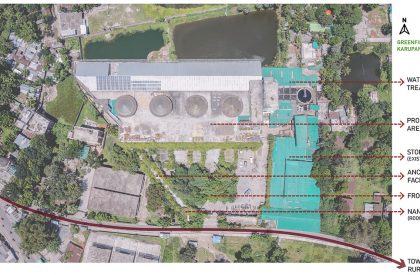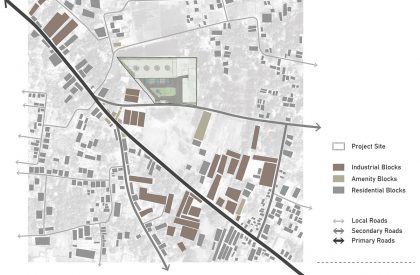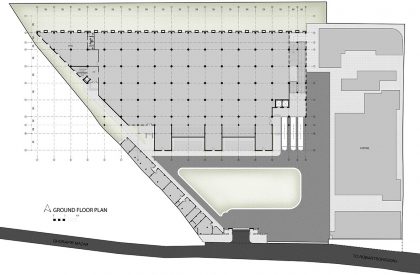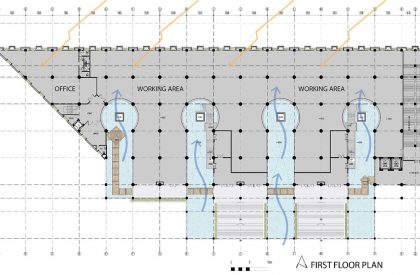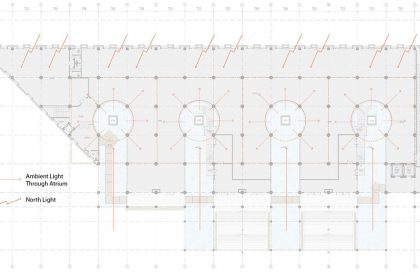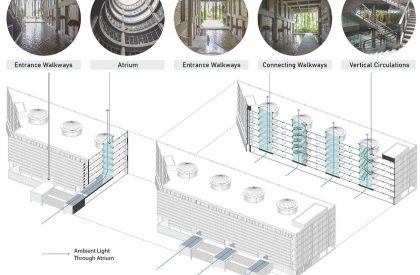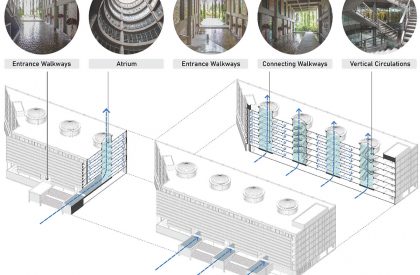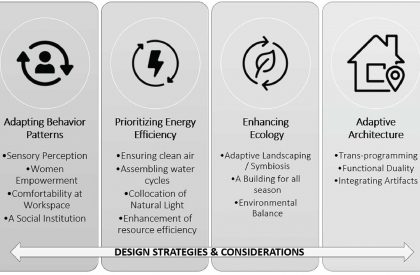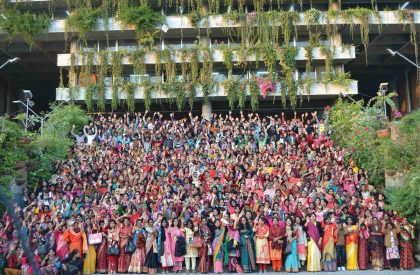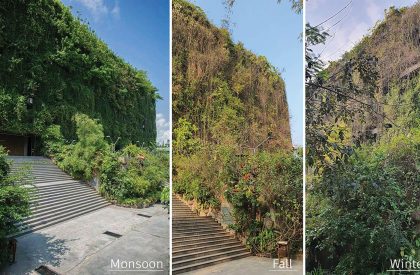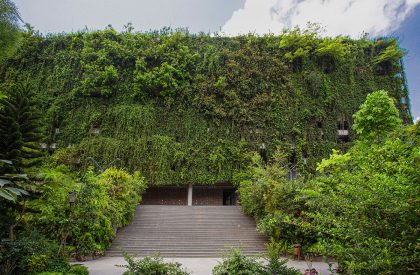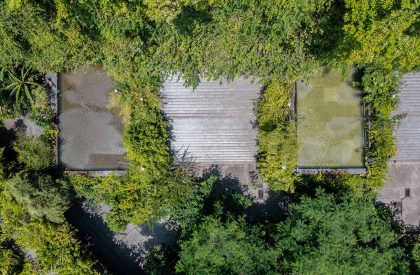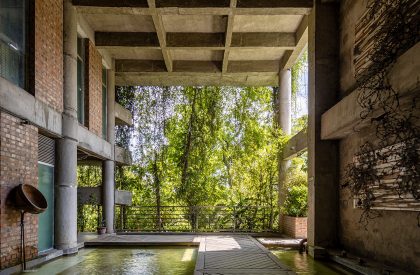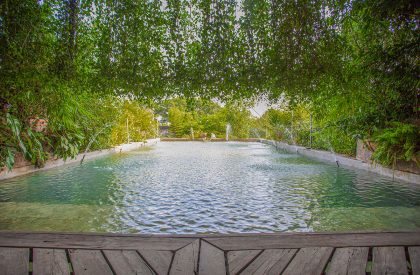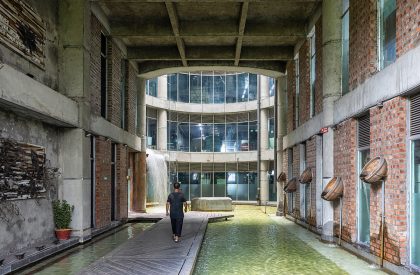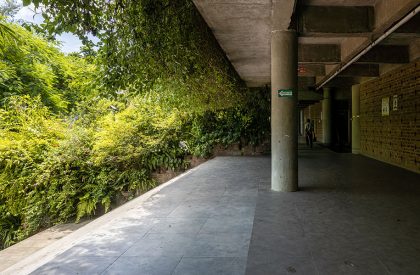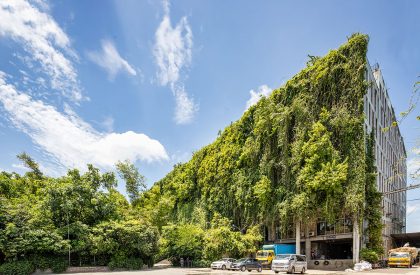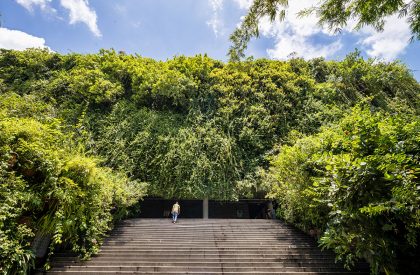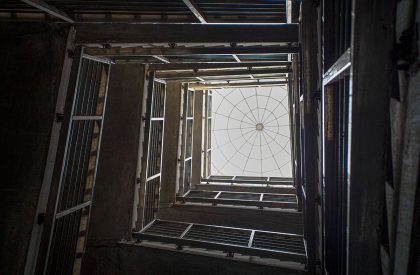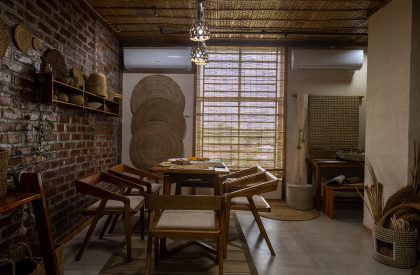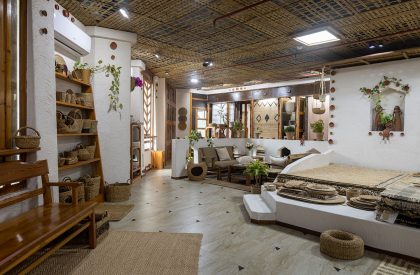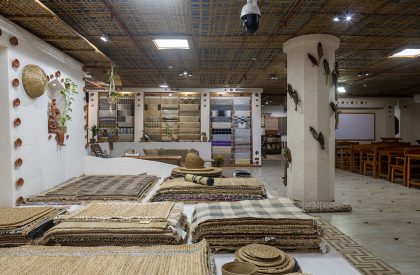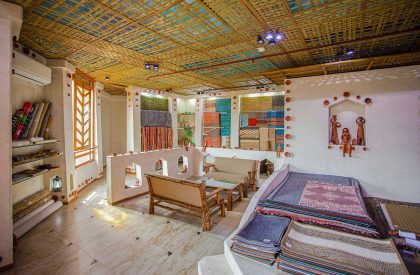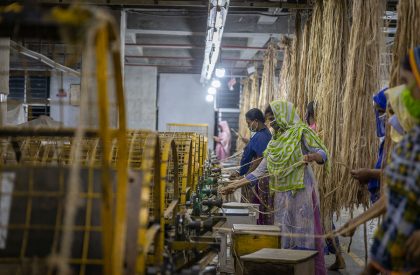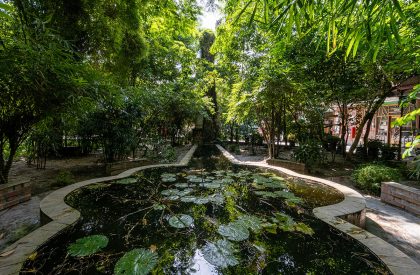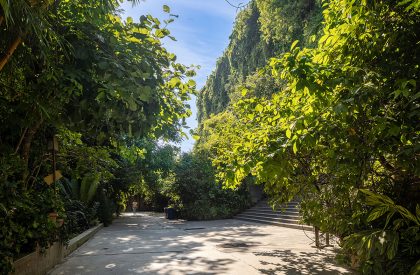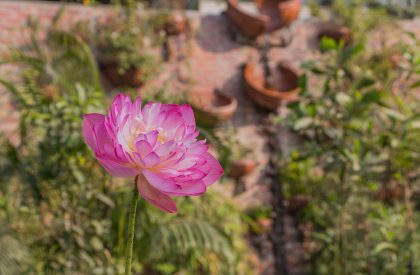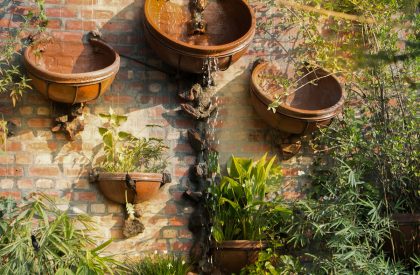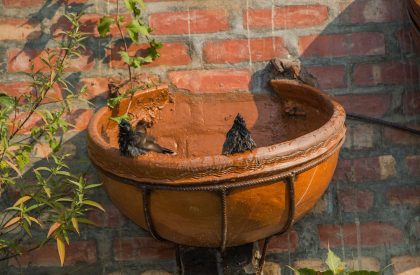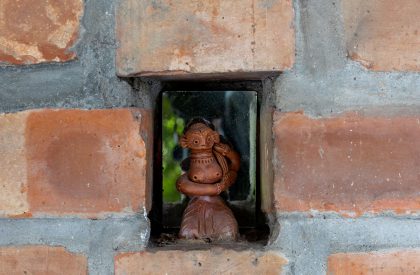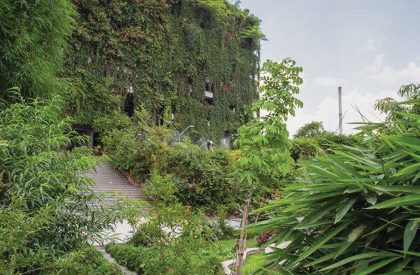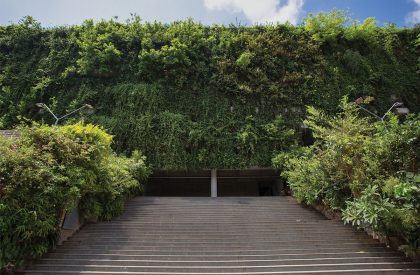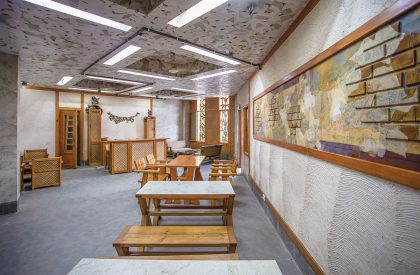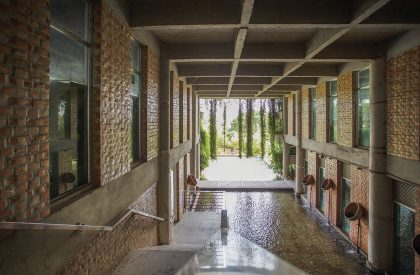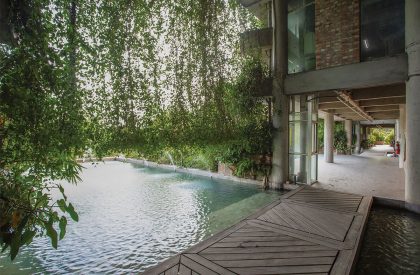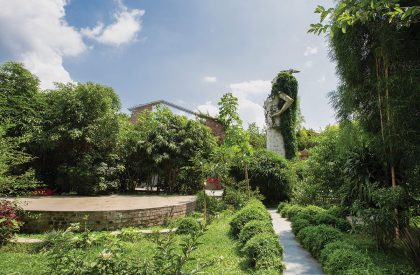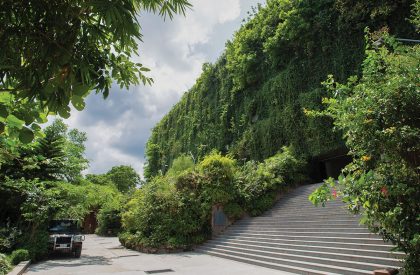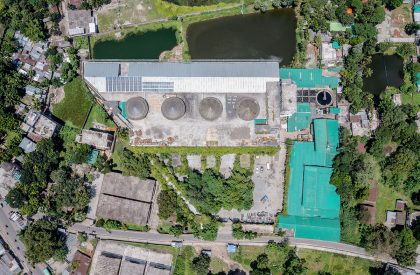Excerpt: Green Field of Karupannya Rangpur Ltd. by Nakshabid Architects is a project that rethinks industrial architecture with climate responsive design. The project combines workplace and recreation space for the mass workers. The design emphasizes rural architecture, using courtyards, gardens, and traditional solutions. Exterior facades are cast concrete with lush green finish, while interior walls are locally produced brick and concrete.
Project Description

[Text as submitted by architect] The Greenfield Factory of Karupannya Rangpur Limited sets a dimension to the working environment in this context which leads the workers to visit the factory on their weekends for recreation. Conventionally industries are a kind of space which can’t be thought of any other quality than working but this factory unit is designed with a different vision. The whole compound as well the workplaces designed to make the workers feel homeliness. Workers around the compound always feel so relieved due to its design nature. The design idea was to create a kind workspace that is so close to the earth and also integrate the climatic resources at an utmost level into the whole compound.
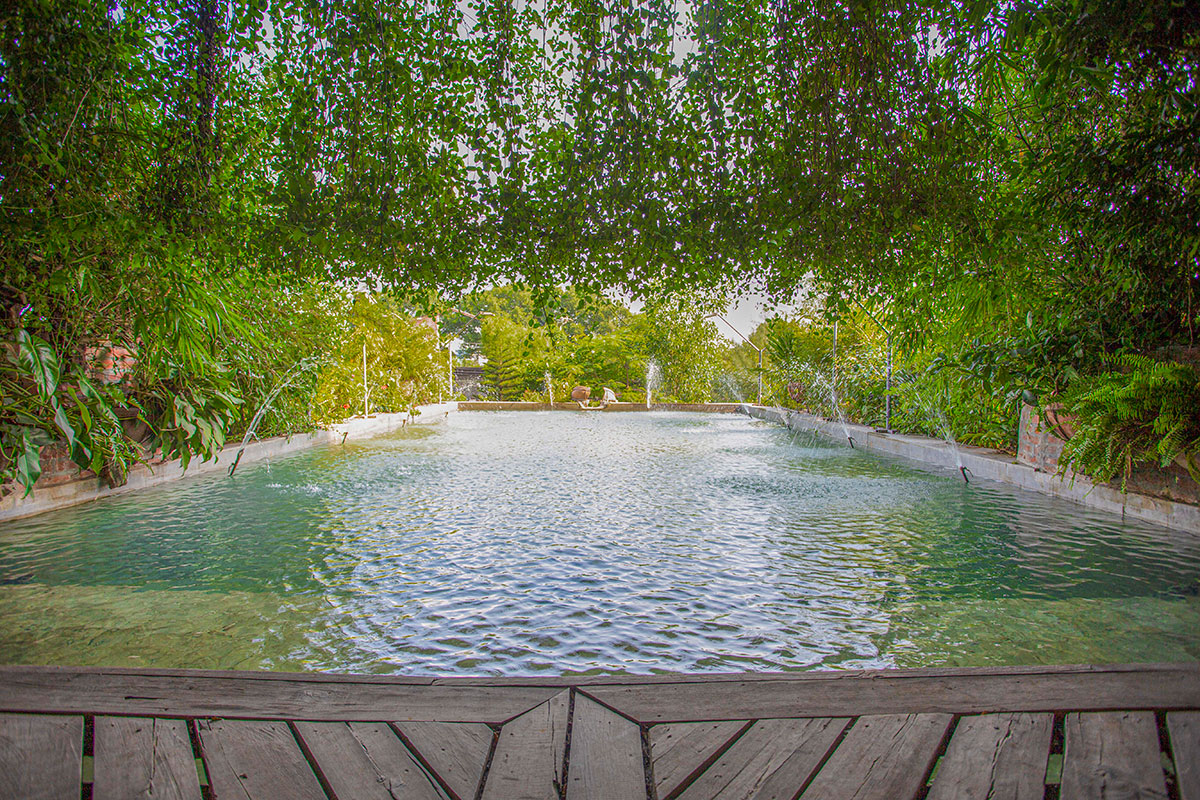
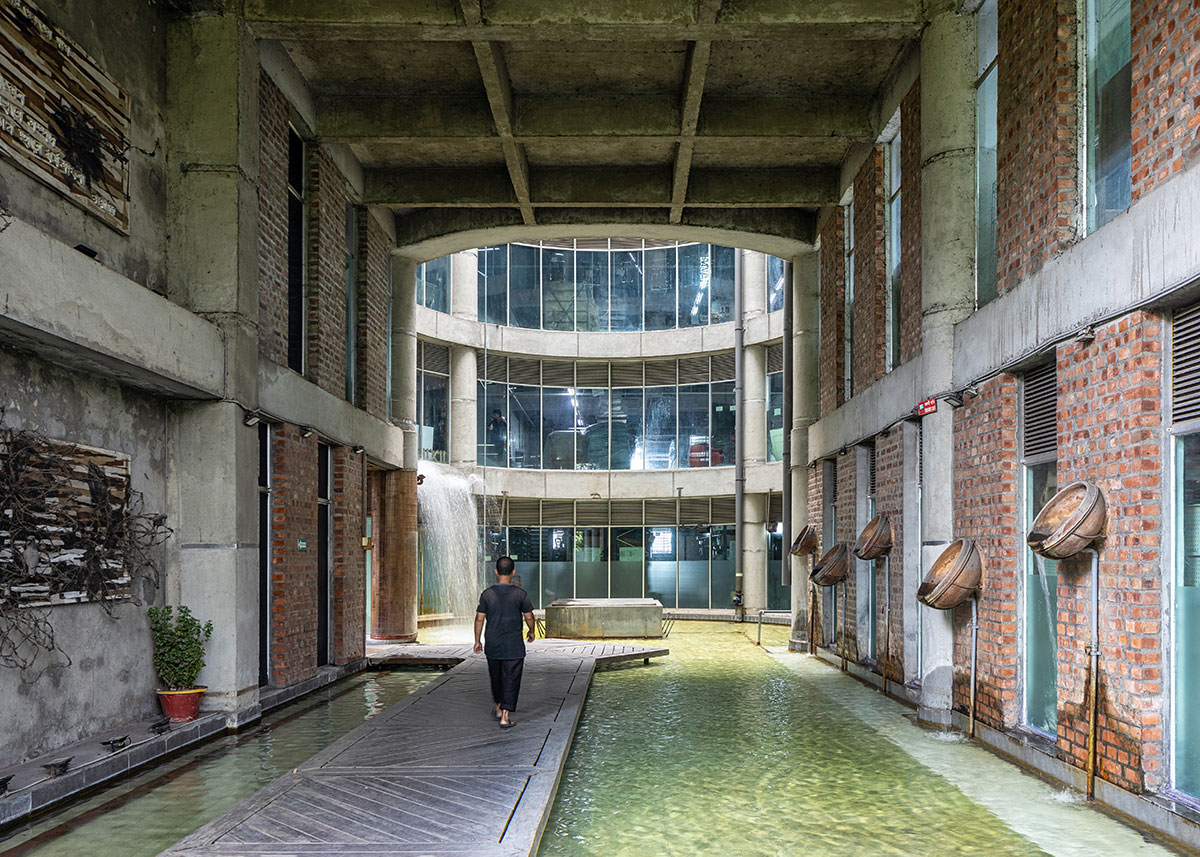
Greenfield Factory of Karupannya Rangpur Ltd is located in Robertsongonj, Rangpur, Bangladesh. Rangpur is in Tropical Monsoon Climatic zone according to Köppen-Geiger climate classification. This Greenfield factory unit started its journey in 1991 in Rangpur and presently manufactures carpets and other woven floor coverings, the most majority of which are shipped to the European Union, the United States, and Asia. The entire site area of the project is 14170 square meters, and the overall built-up area is 24850 square meters. Their main factory building is a seven-story structure with a footprint of 3820 square meters. The project’s construction phase began in 2013, and it began functioning in early 2017.
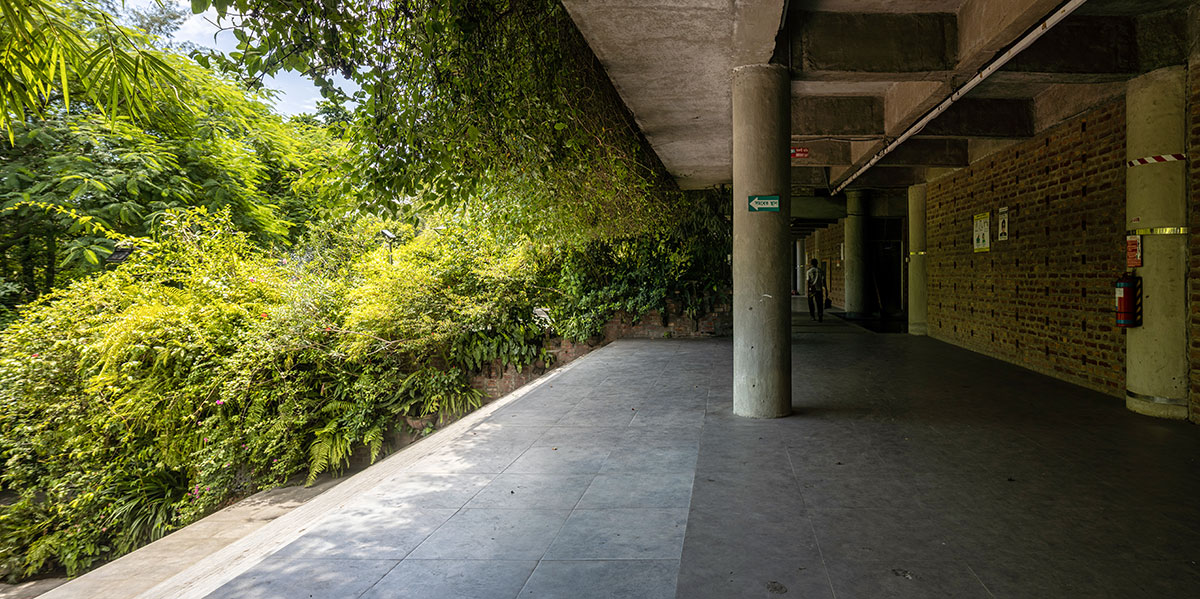
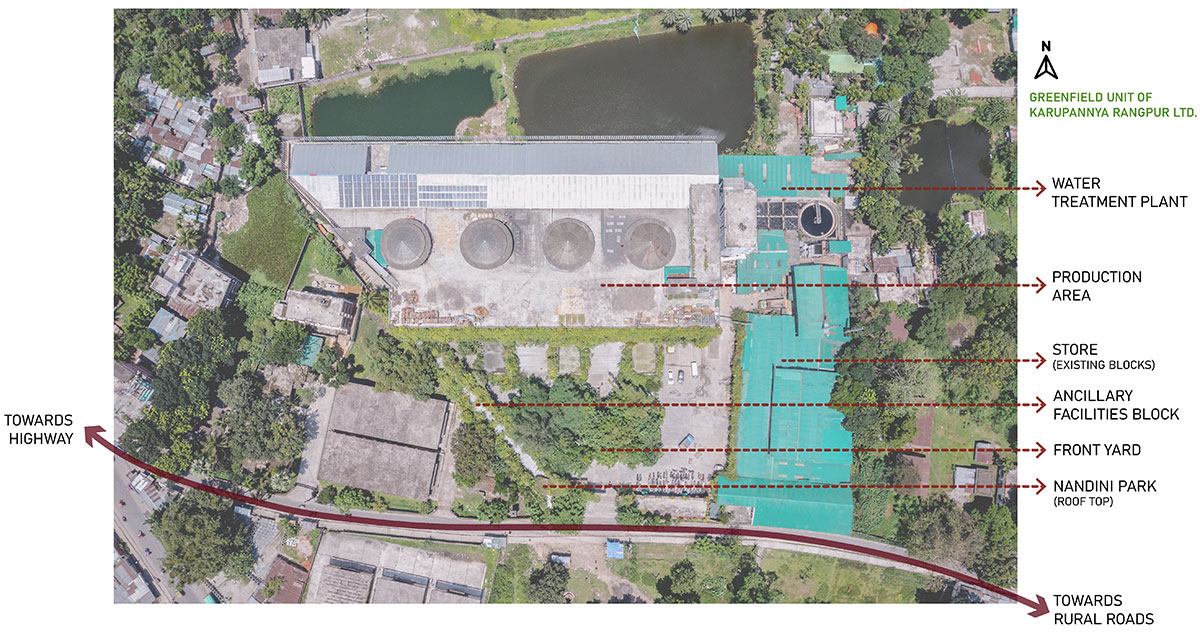

Bangladesh has a tropical climate with moderate winters from November to March and hot, humid summers from March to June. As being located in a monsoon climatic zone the monthly mean temperature of the project site is over 18 °C and humidity remains high throughout the year. Climate responsive design of the green field factory building for Karupannya Rangpur Ltd. is a pioneering example in this region. As sustainable measures and climate responsiveness was the primary concern of the project, it achieves perpetual beauty as well as new dimension while responding to the primary concerns.
The factory is designed as an energy-efficient and climate-responsive structure that can save up to 40% on energy consumption. Energy efficiency, water efficiency, optimal use of daylight, plantation, and ecosystem preservation are the sustainable design elements being implemented. The south, north, and east facades are kept open to let the air circulate through the structure, keeping the working climate naturally beneficial.

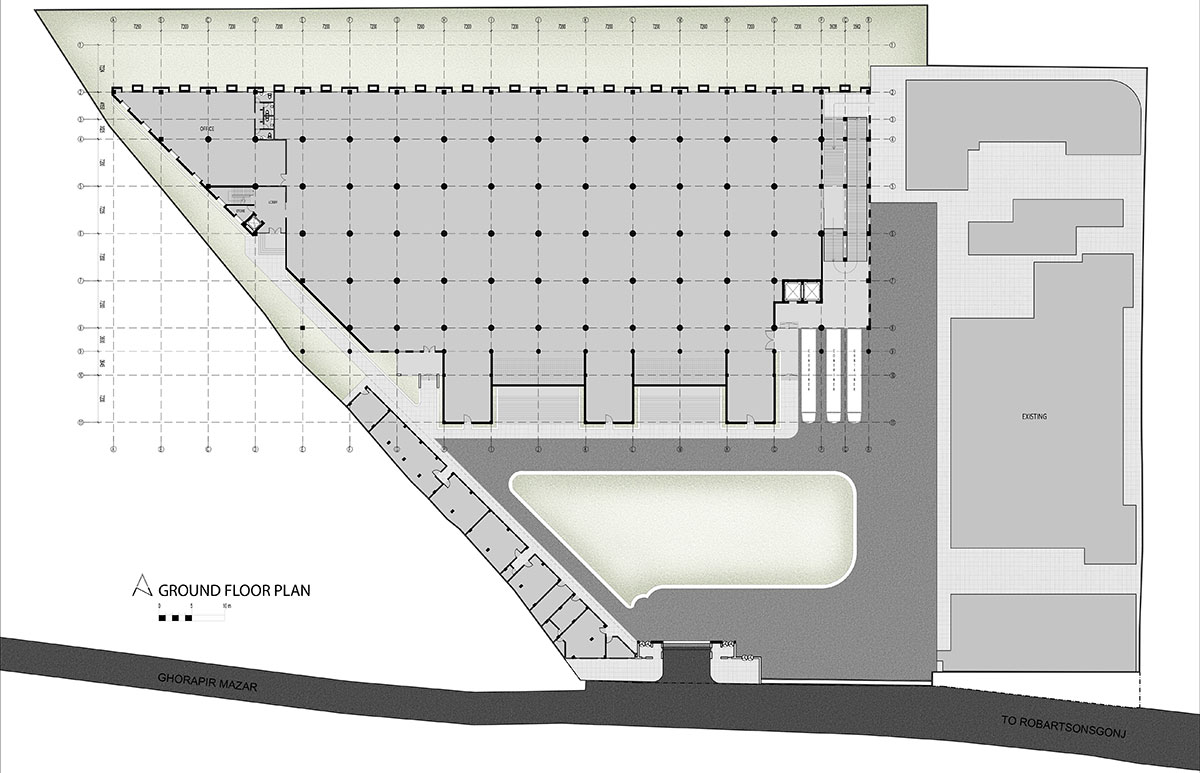

Moreover, the front face at the south side includes four-foot-deep apertures and verandas, which are similarly covered with layers of plants. The northward breeze blowing through the plants and water reservoirs enters the building through four circular voids, keeping the internal spaces 5 degrees cooler than the outside. The whole complex has no air conditioning and very few numbers of electric fans. Soft natural daylight enters the indoor spaces through the plants of the façade and multiple central atriums. Strategically created vertical gardens reduce solar heat gain and help to improve air quality. Also, plants were chosen according to the monsoon climate to support the ecosystem.
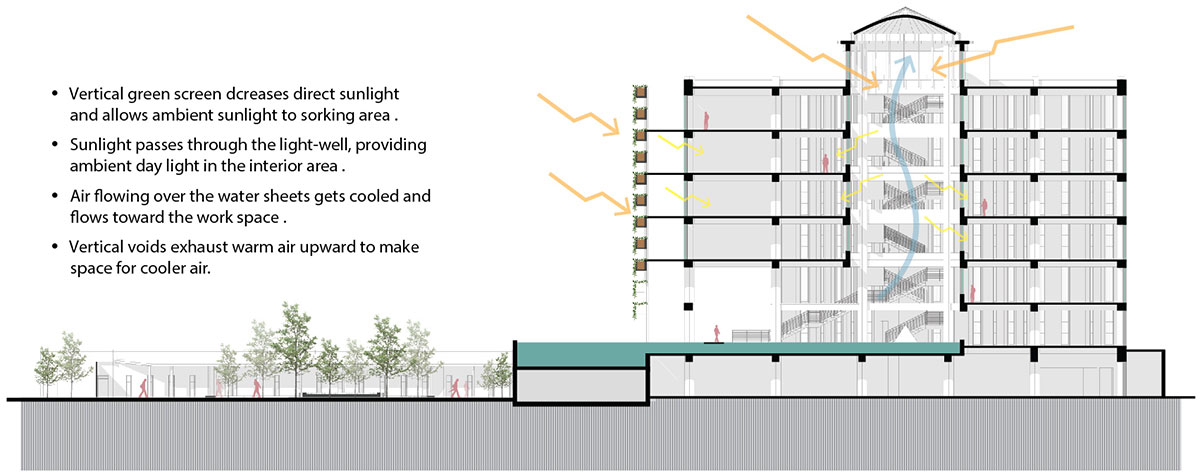
Buildings frequently disrupt the relationship between humans and nature, as well as the surrounding ecosystem. Design of the main factory building was successful to establish a close bonding between human and nature while supporting the ecosystem of the building surroundings. The idea was implemented to support the climatic scopes as well.
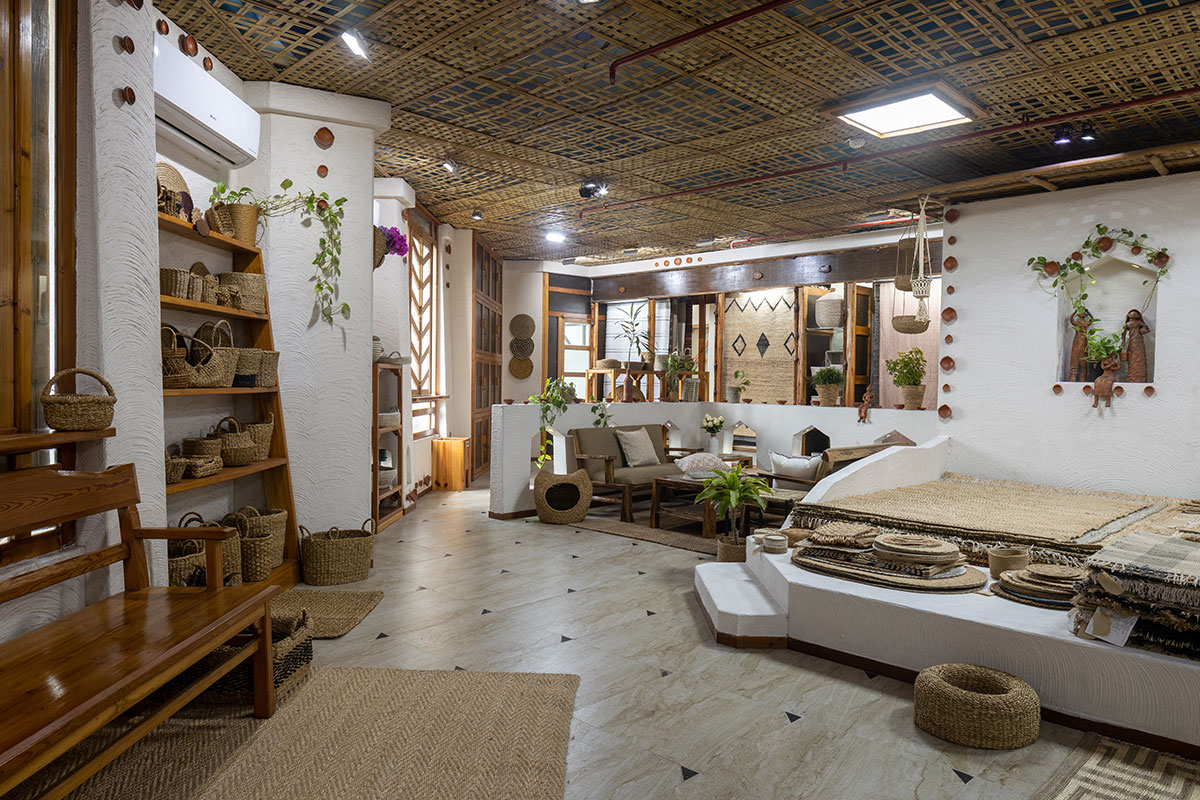

Overall design emphasizes on the rural contextual archetype like using courtyards, gardens, water bodies, and traditional climatic solutions as well as preserving rural vibes. Exterior facades are cast concrete with a finishing of lush green. Interior walls are of locally produced exposed brick and concrete. The walls for product display and retail area the display rooms are decorated with clay sculptures and ambient lighting. There are about thousands of small and big sculptures in the entire premises. Miniature female sculptures decorate the stairs and interior walls. Workers in this factory feel highly enthusiastic and motivated to work in such a beautiful and environmentally friendly workplace.


Moreover, there is an attractively constructed “Nandini Park” on the rooftop of the day-care facility where many workers eat their lunch daily. Nandini’s assortment of flowers and plants keeps them looking fresh and happy all day. In the garden, the linear park, the lily pond, and the podium in front of the factory, they can gossip and spend time in smaller or larger groups. Such brief respites in the midst of hectic working hours fill them with delight. A beautiful front yard garden design in the front zone of the site is an eye treat to everyone while entering the compound.

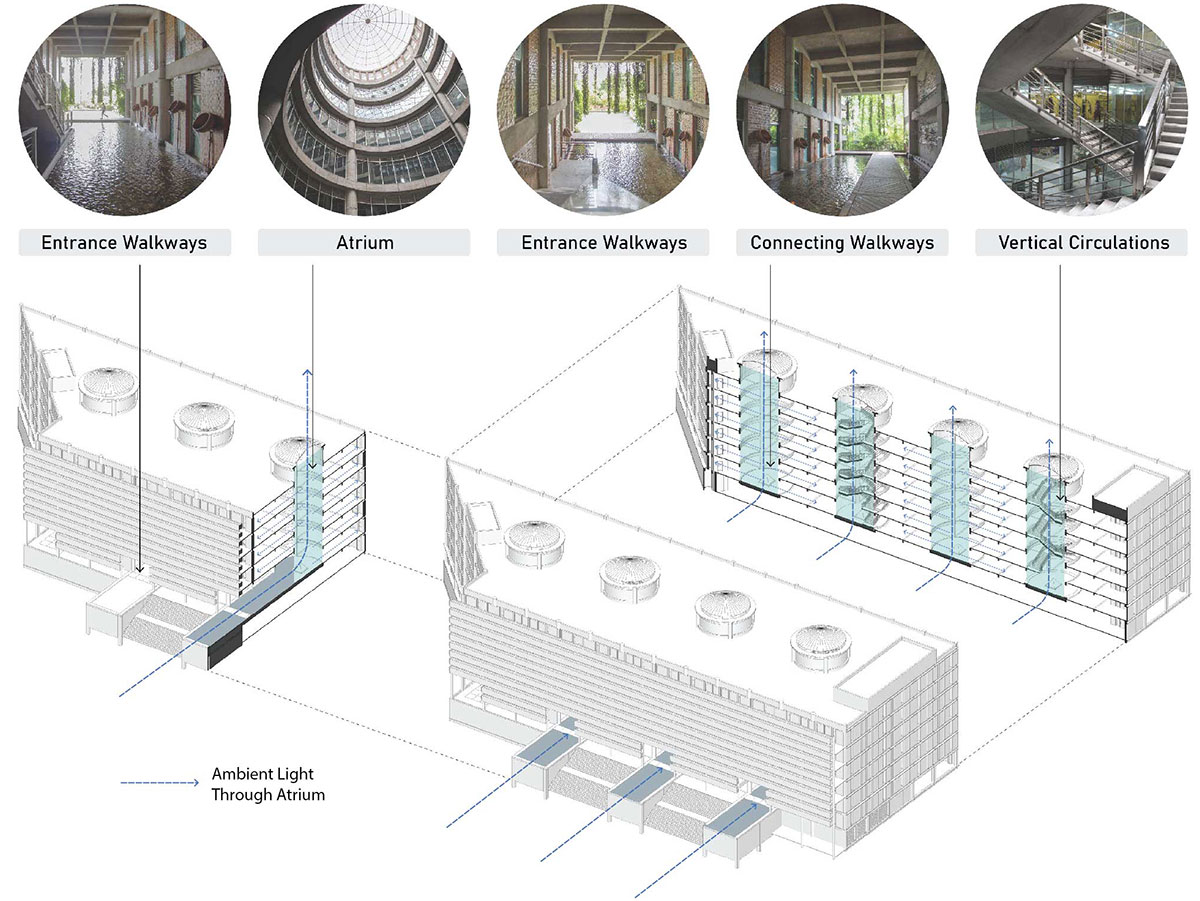
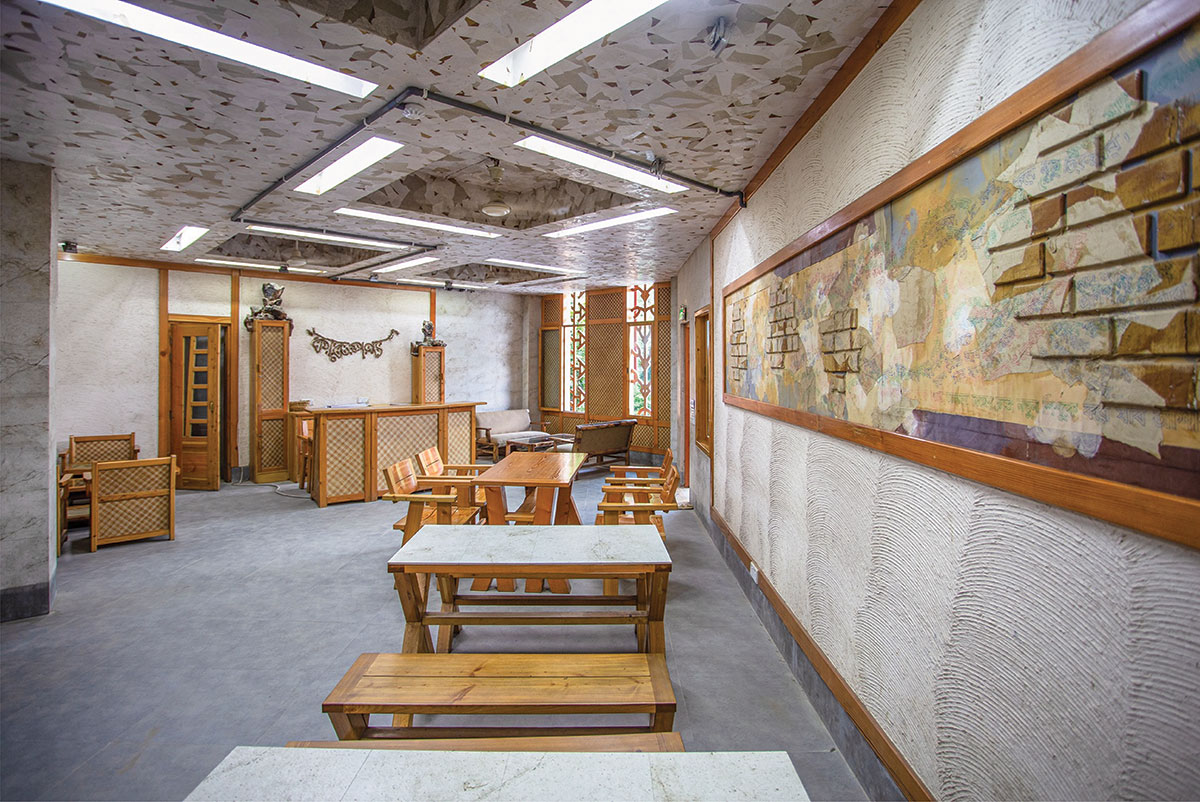
This front yard also includes a splendid sculpture called “Bonolota” to represent the visual strength of women’s empowerment as eighty percent of the factory’s 5000 employees are women. The job opportunity of such permanent infrastructure has given the local women a sense of security and unleashed freedom. Thus, women’s importance in the family has been escalating. Besides the working area, the factory comprises a medical centre, grocery shop for employees, food canteen, prayer room, ATM Booth etc.
Considering the climatic scopes, four enormous water bodies are designed at the southern front façade of the building entrance, from where natural air flow comes. Passing through the central green and over the water bodies, air temperature is naturally reduced through evaporative cooling. From outermost to the deepest portion of the mass, the cool air is gradually exhausted through the voids to the roof above.
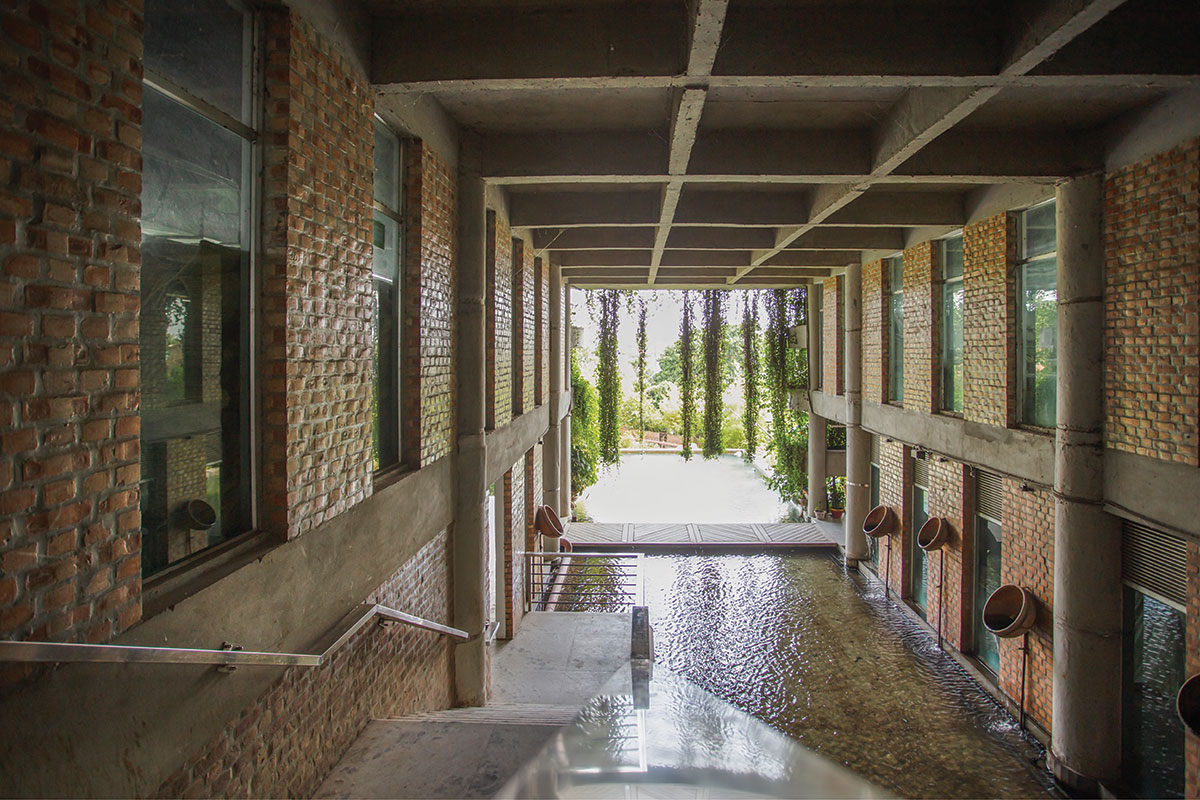

On the other hand, water becomes naturally ionized when in contact with the air through oxidation and ready to use, eliminating any need for chemical water treatment plants. Used water is treated in ETP and re-used again. During the monsoon, these water bodies are also used for rainwater harvesting. Also, during the monsoon, the moist weather helps the greenery flourish to its full potential, and therefore air traveling towards the interior is always dryer and much more comfortable to use.
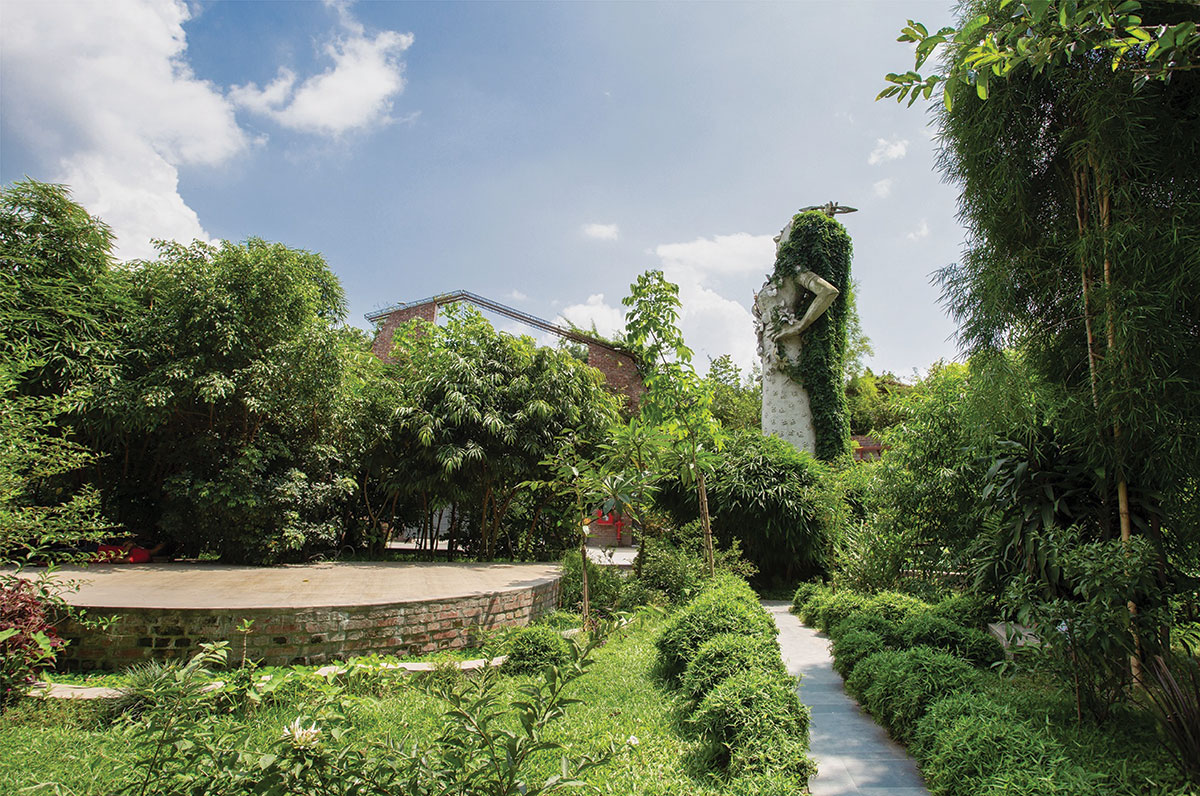
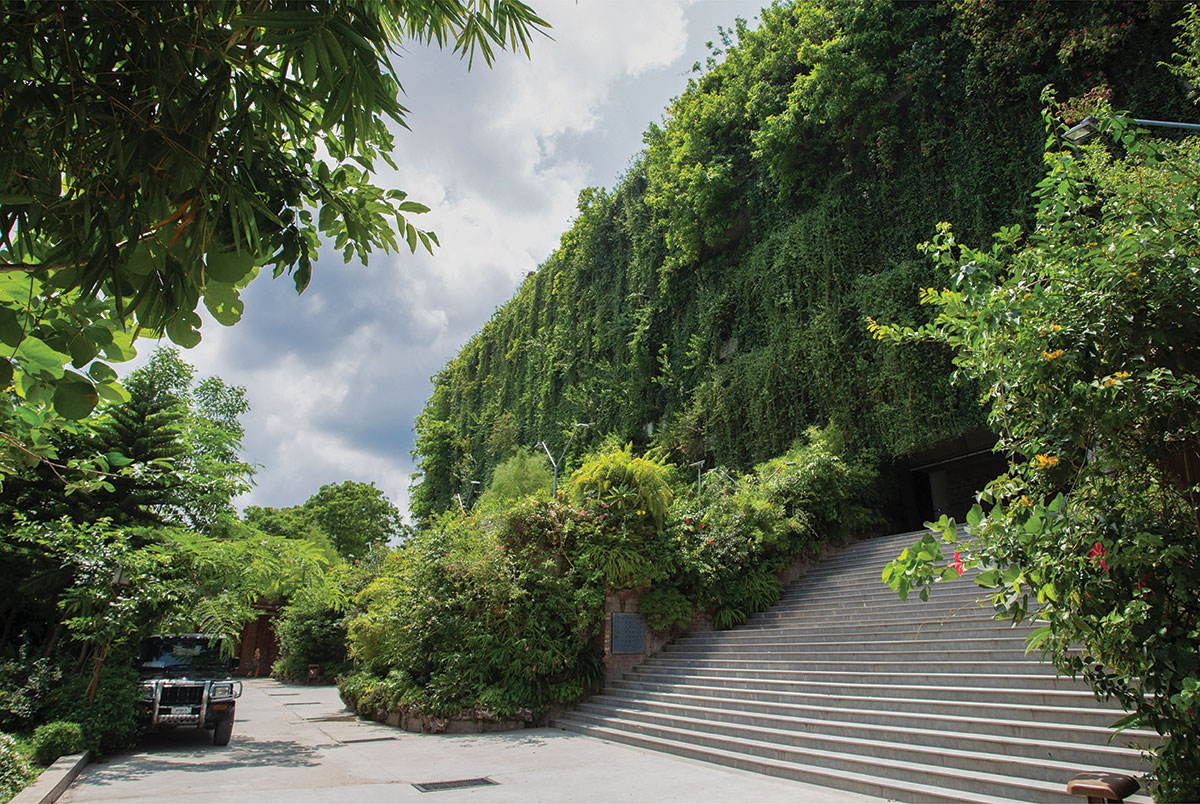
This Greenfield Factory it’s not just a factory or workplace to the workers, it’s rather like a home to them. A home of their own with a touch of green and earth. This unit is a combination of workplace and recreation space for the mass workers. A glimpse of the context of this region. The Vertical green stalks bending upon the water bodies, touching the water slightly, reminds the identical image of the ponds of rural Bangladesh.

